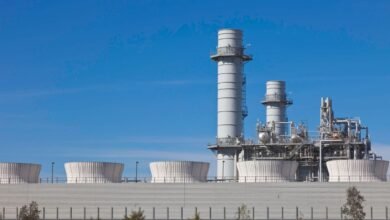Cement Ship Produces Ingredients While Sailing

▼ Summary
– Seabound has developed a carbon capture system that converts CO₂ from ship engines into limestone, a key cement ingredient.
– The system is installed on the UBC Cork, a cement carrier, with captured limestone being used at a net-zero cement plant in Norway.
– Shipping and cement production are major polluters, contributing 3% and 8% of global carbon emissions, respectively.
– The IMO mandates shipping fleets to cut greenhouse gas emissions by 30% by 2033 and 65% by 2040, increasing urgency for solutions.
– Seabound’s retrofit approach preserves existing engines, while alternatives like Amogy’s ammonia-cracking require significant power plant overhauls.
The shipping industry faces significant environmental challenges, but innovative solutions are emerging to tackle pollution while creating valuable materials. One London-based firm, Seabound, has pioneered a carbon capture system that converts CO₂ emissions from ship engines into limestone, a crucial component in cement production.
This groundbreaking technology is currently being tested aboard the UBC Cork, a cement carrier navigating the Mediterranean. When the vessel arrives in Norway, the limestone generated during its journey will be unloaded and used at Heidelberg Materials’ net-zero cement plant in Brevik. Heidelberg Materials, a major player in the construction sector, recently made headlines for its partnership with autonomous trucking startup Pronto, signaling its commitment to sustainability.
Maritime shipping and cement manufacturing are among the most carbon-intensive industries, contributing roughly 3% and 8% of global emissions, respectively. Reducing their environmental impact is no simple task. Ships require vast amounts of energy, and current battery technology lacks the density needed for long voyages. Meanwhile, cement production inherently releases CO₂ through chemical reactions, compounded by the fossil fuels used in the process.
With the International Maritime Organization (IMO) mandating a 30% reduction in fleet emissions by 2035 and 65% by 2040, the pressure is on for cleaner alternatives. Seabound’s approach stands out by retrofitting existing vessels rather than requiring costly engine replacements. Their system captures exhaust emissions directly, transforming them into usable limestone without disrupting current operations.
Other companies, like Amogy, are exploring ammonia-based propulsion to eliminate emissions entirely. While ammonia offers high energy density, adopting it would demand extensive ship modifications. In contrast, Seabound’s solution provides a more immediate and scalable option, aligning with Heidelberg’s goal of cutting emissions across its supply chain.
As the shipping and construction sectors seek sustainable pathways, technologies like these could play a pivotal role in reducing their environmental footprint while maintaining efficiency. The success of such innovations may well determine how quickly these industries can transition toward a greener future.
(Source: TechCrunch)


